|
|
|
|
Products mentioned in this Article
--None--
|
|
|
|
|
|
|
|
|
 |
|
|
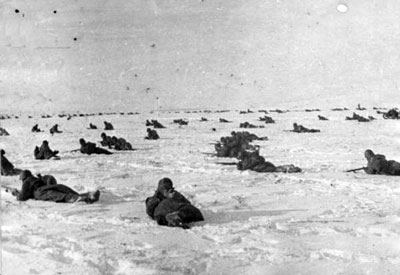 |
V. The Juggernaut Strikes – A Day-by-Day Account
By Wolf Höpper
V.5. 23 November
Return to 22 November...
During the night the mechanised and mounted units of the southern Soviet pincer partially resume their attacks against the remnants of the Romanian 1st and 18th Infantry Divisions. The first attacks were successful and the Romanians were thrown out of their defensive positions.
|
|
The panzers and infantry of Kampfgruppe Sauvant
then counterattacked and repelled the Soviets. The defensive position
was held until the morning. The kampfgruppe was later bypassed and a
hastily transferred alarm company was surrounded at Vodeno, north of
Akssay. The unit was ordered to break out and retreat to Akssay.
Company Schmid was transferred to strengthen the defence perimeter around Akssay. The company was able to overtake advancing Soviet cavalry units without being harmed.
After a short fight, the German infantry at Vodeno was relieved and the reinforced kampfgruppe marched as ordered to their new positions.
At dawn of that day the 5th Guards Cavalry Division captured Golubinskiy and Malo-Golubinskiy.
|
|
The 32nd Cavalry Division advanced towards Bolshenabatovskiy and met strong resistance. This point marked a significant step in the encirclement of the German 6th Army. The German 16. Panzerdivision undertook four counterattacks with panzers and infantry against the 32nd Cavalry Division. Although the Germans didn’t succeed in throwing the Soviets back, the latter were also unable to advance. By making these attacks the 16. Panzerdivision sealed its own fate, losing any chance of breaking free.
After midnight the Soviet 55th Cavalry Division left the Bolshaya Donshchinka area to carry out the orders issued the day before.
|
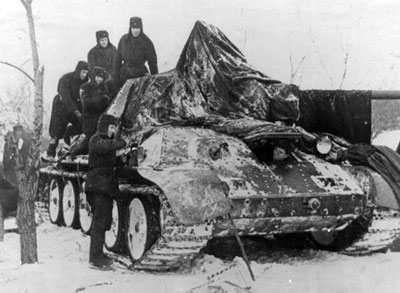 |
|
Unfortunately they didn’t have radio contact
with either the 8th Cavalry Corps or the 112th Cavalry Division. At
Medvezhiy the leading elements of 55th Cavalry Division attacked the
rear units of the retreating 22. Panzerdivision. At 0300 hours panzers
and 250 Kradschützen of this division counterattacked the 55th Cavalry
Division, while they were on the march. The attack was repulsed by the
Soviet cavalry strongly supported by anti-tank units.
Once more the German Luftwaffe made their presence felt. The 112th Cavalry Division came under German air attack for 6 hours. Each attack consisted of 10 to 30 aircraft. A total of 300 sorties were carried out. The advance of this division was greatly hindered, and it took the Soviets several hours to recuperate from the air attack.
The 21st Cavalry Division finally captured the Frunza State Collective Farm No. 2. This occurred around dawn and came after pursuing the retreating Romanian units. The Romanians put up another stubborn fight around Gorbatovskiy and Ushakovo, which were later captured by the Soviets during the night.
|
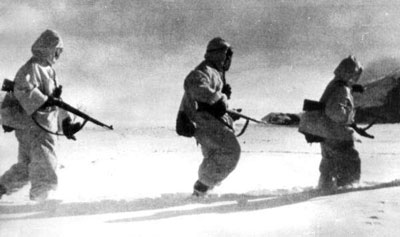 |
At 0400 hours the Soviets attacked the new positions of the 24. Panzerdivision, but attempts to flank the Germans were stopped by the panzers. Further to the north, Soviet mobile forces (cavalry, motorised infantry, and tanks) advanced towards Lutshinskoye to capture the Don River bridge. Again the German combat group was bypassed because they lacked the infantry forces to set up a defensive line. The divisional staff ordered the retreat to Skotovod. That retreat led them later from Nabatov to Glaskov. It was intended to establish a new defensive line there, with the XI Army Corps north and 16. Panzerdivision south of the town.
|
An intended attack by the 24. Panzerdivision towards Nabatov was abandoned due to their own recon platoon report of strong enemy forces there. The breakthrough was directed towards Golubinskaya to Maly-Nabatovskiy. One platoon covered the rear area, while two were up front attacking. The attack succeeded and Kampfgruppe Don finally linked up with units of the 16. Panzerdivision.
At the Golubaya sector Oberst von Below awaits the kampfgruppe with further reinforcements:
II/Panzergrenadier Regiment 21
I/Panzer Artillery Regiment 89
3rd/Panzer Pioneer Battalion 40
2nd/K 4 (Armoured halftracks)
Staff Panzer Regiment 24
|
The kampfgruppe was reorganised and an attack to gain the vital height 198.4 planned for that night. During the attack the panzerjäger battalion encountered a Soviet cavalry brigade and destroyed it completely. Together with the panzers, the objective was then captured.
Later the division planned to attack towards Yelampievskiy to close a gap that couldn’t be sealed off by the 16. Panzerdivision. Before the attack could begin Soviet cavalry and tank forces advanced through the opening in the front line. The only defensive forces here were a construction battalion, a medical company, and a motorised infantry company, raised from extra tank crews of the panzer regiment several weeks before.
|
|
They also suffered heavily during the
house-to-house fighting at Stalingrad. These scattered forces barely
held against the numerically superior and far better equipped Soviets.
The Soviet 119th Rifle Division of 5th Tank Army captures Shirk before dawn, and continued its advance towards Verkhna-Cherenskiy, joining forces with the 21st Army there. The remaining parts of Romanian 1st Armoured Division were nearly destroyed during encounters with the Soviets as they advanced.
During the night the 124th Rifle Division captured Karagichev and advanced towards Verkhna-Fomikhinskiy, which was conquered after an assault that evening. They join with the 21st Army, which then completed the encirclement of the remains of the 3rd Romanian Army.
Parts of 1st Tank Corps attacked towards Surovikino and Rychkovskiy. During the morning hours the Soviets offered the encircled Romanians, under Lascar, an honourable surrender. At first he refused, but after receiving reports that his soldiers were lacking ammunition and food, he accepted the offer. The units under his command fought bravely despite the superiority of the Soviets in nearly every aspect. Five divisions of the 3rd Romanian Army encircled around Raspopinskoye surrendered and marched into captivity.
|
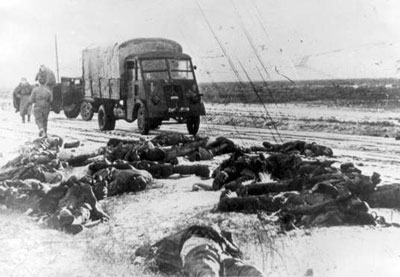 |
When the Soviets attacked the bridge at Kalach at 0500 hours, the 3rd Maintenance Company and a spare part company of 16. Panzerdivision joined the defence of the bridge. When the first Soviet T-34 tanks arrived the soldiers thought they were captured vehicles of the German pioneer school used for anti-tank training. Due to the misunderstanding the bridge’s explosive charges were not triggered. A hard fought combat then ensued. The Soviets attacked en-masse forcing the defenders of the 16. Panzerdivision to retreat eastwards and therefore escape the cauldron. They rejoined other supply and maintenance units at Morosovskaya, 100
km southwest of Kalach.
|
|
But from this point on the 16. Panzerdivision
had virtually none of their own supply and other rear area units at
their disposal.
At 0520 hours the Golubaya sector was the only cohesive line formed
with a relatively strong defence established. An counterattack by the
panzer battalion of 24. Panzerdivision failed, because the promised
Grenadier Regiment 134 had still not arrived. The Soviet bridgehead at
Yelampievskiy could not be destroyed.
In the meantime a small Soviet cavalry force, probably battalion sized, moved secretly south of Kampfgruppe von Below. A panzer platoon, waiting there in reserve, discovered them and attacked through the Suachaya-Golubaya valley and annihilated it completely.
Finally Grenadier Regiment 134 arrived on trucks and attacked in conjunction with the panzers over Goryuschkin towards Yelampievskiy. The 16. Panzerdivision advanced from the south and gained height 201.4, hemming in the Soviet bridgehead. However, the success couldn’t be exploited as news arrived that two Soviet tank brigades had broken through at Marinovka. The combined attack forces of 16. and 24. Panzer divisions were immediately redirected towards Pestkovka to meet the new threat. When the panzers arrived at the expected breakthrough area no enemy was visible. The obviously incorrect report had cost the Germans victory in the sector. The engagement in the north and transfer to Pestkovka drew the only available attack force of significance away from the southern Soviet pincer, allowing it to finally reach Kalach.
|
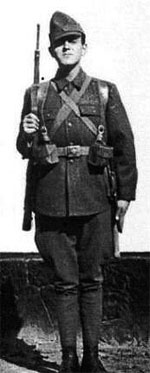 |
The Soviet 8th Motorcycle Regiment was split into several groups and attacked retreating units south of Bolshaya Donshchinka.
Because the attempts of the 159th Rifle Division to capture Bokovskaya were repulsed by German panzer forces supported by infantry, the 159th Rifle Division and 47th Guards Rifle Division dug in at their newly established lines.
The 8th Cavalry Corps aborted its frontal attacks south of Bolshaya Donshchinka because the 346th Rifle Division and 8th Guards Tank Brigade had arrived and pressed the attack forward. Even this flank attack was not a success and was repulsed. At dawn the main body of the corps reached the line of Naumov, Petrovka and Arzhanovskiy. The 22. Panzerdivision was finally bypassed and forced to retreat.
Kampfgruppe Sauvant dispatched panzer company Schmid from Akssay towards Peregrusnye in the south to engage elements of the 4th Cavalry Corps that had advanced in to the area. The company halted the Soviet advance and enabled the remaining supply units of the 14. Panzerdivision to retreat from Akssay to Shutoff.
In the area of height 222, the enemy broke through the positions of 14. Panzerdivision during the night endangering the whole left flank of XI Army Corps and a general retreat was ordered.
The Soviet 26th Tank Corps cleared Kalach around 1600 hours of all Axis resistance.
|
The 1st Tank Corps advanced over the endless steppe without encountering significant resistance. This had the effect of splitting the attack into three directions. The northern group advanced towards Popov. The centre group headed for Verkhna-Cirskaya. The southern spearhead marched towards Surovikino. The southern and northern detachments had to stop their advance, since their supplies, especially fuel, were running low. The centre continued advanced towards Verkhna-Cirskaya.
On 20 November, when the Soviet breakthrough was telephoned to all units of the 14. Panzerdivision, Hauptmann Sauerbuch, quartermaster (Ib) of the 14. Panzerdivision command staff, left hospital where he was ill with a serious case of jaundice. He contacted the headquarters of his division and informed them, that he will raise a kampfgruppe to defend the area, in case the Soviets should reach it. The area was also fortified as well as possible. The terrain was rough and greatly hindered the deployment of tanks, which the defenders used to their advantage.
|
|
After the Soviets capture of Kalach, the 14. Panzerdivision retreated over the eastern Don river bank to Peskovatka. During the following night Panzer Regiment 36 received orders from the VIII Army Corps to assemble at Peskovatka, since its combat groups were still fighting the advancing Soviets at the Don under command of the 16. Panzerdivision.
By the day’s end the Soviet 86th and 65th Cavalry Regiments had taken the northern part of Bolshenabatovskiy in hard street fighting. The 197th Cavalry Regiment advanced to the eastern edge of the State Farm and cut the road to the east.
In the evening the forward elements of 1st Tank
Corps attacked the German bridgehead at Verkhna-Cirskaya.
|
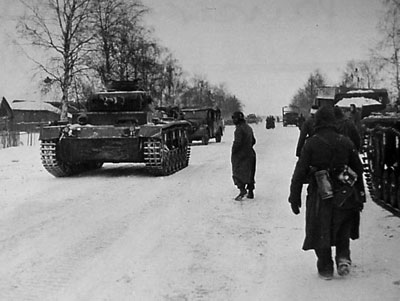 |
|
They run into
the new Kampfgruppe Sauerbuch there. It consists of the following units:
1st/Kradschützen Battalion 64 (armoured cars, Sd Kfz 250) under Oberleutnant Feßmann
Group Domaschk (motorized infantry in halftracks)
Group Aly (gathered supply drivers and mechanics, equipped with infantry weapons)
Group Elbinger (similar to Group Aly)
They held a line southeast of the Chir train station, covering both Don bridges east of Mikosh.
The Soviets arrived piecemeal, with each of their attacks repulsed in turn. Some units threatened to bypass the northern flank, so Group Feßmann (10 Sd Kfz 250, 1/2 company of Kradschützen, 4 x 7.5cm anti-tank guns) attacked the Soviet infantry. The Soviet infantry routed and caused their tank formations to panic also. The Soviet advance was stopped in this area.
The panzers of the 14. and 16. Panzerdivision were concentrated on the road from Malonabatovskiy to Trekhostroskaya. From there they attacked the flanks of 6th Guards Cavalry Division in continuous series of battles. The Soviet 6th Guards Cavalry Division broke through the resistance and advanced on to the road. They didn’t clear it of the German alarm units. However, the road was continually under disruptive fire making if difficult for any reserves trying to use it.
|
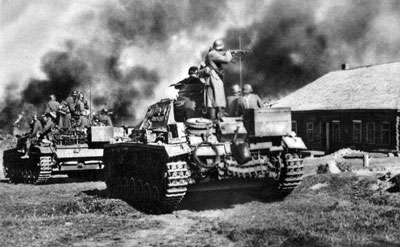 |
In the south Kampfgruppe Sauvant withdrew and marched through Shutov to Darganov.
The rearward units also retreated before them in the same direction. Once there the kampfgruppe established a new defensive line. During the night, the kampfgruppe was ordered to return to Shutoff and secure the village. The Soviets followed close behind and secured their positions with a line of 7.62 cm guns. Akssay was reported to be strongly fortified, so any planned attacks were dropped.
At the end of the day the northern kampfgruppe of 14. Panzerdivision had only 24 operational panzers.
|
|
During the day the tank spearheads of the Soviet
4th Tank (General A.G. Kravtchenko) and 4th Mechanized Corps (General
W.T. Volski) meet at Sovyetskiy.
Another propaganda myth put forward by the official Soviet version of events claims that around 1600 hours both spearheads met before Sovyetskiy, and the agreed signal (a series of green flares) were fired, soldiers from both sides run to each other and cheer wildly. This is nothing but pure fantasy. The truth was completely different. Both spearheads thought the forces opposite them were enemy and they started to attack each other. For half an hour both sides fought each other and suffered heavy casualties in men and tanks. After sending reports to their superiors, the following was stated:
|
|
The commander of the 45th Tank Brigade, Colonel
Leutnant K S Chidkov received reports that despite giving the agreed
upon recognition signal several times, his units received fire from the
opposite side. Thinking they were German mechanized units they attacked
and fired back.
On the opposing side the second in charge to Yeremenko, Leutnant General M M Popov reported, after conferring with the commander of the 36th Mechanized Brigade, that the 45th Tank Brigade was the guilty party, since no signals were fired.
Despite this unfortunate mistake the first step of the operational plan was completed. The whole German 6th Army was completely cut off from their supply lines.
|
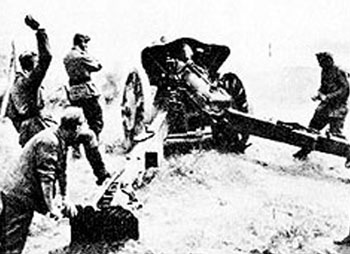 |
Results of the fifth day
This day finally marked the encirclement of the 6th Army. The encirclement of the 6th Army was weak at this point. The Soviet rifle divisions from the northern pincer were still on the march and were trying to gain positions to cut supply routes. The Germans transfer large amounts of supplies, over the open steppe, during the next few days.
A breakout and disruption of the Soviet encirclement was very possible at this point. If the 6th Army could of concentrated its mechanised formations against the south and withdraw its infantry units from the city, a general retreat would have succeeded.
The Soviets faced their own supply problems. (See statements concerning the southern pincer above).
|
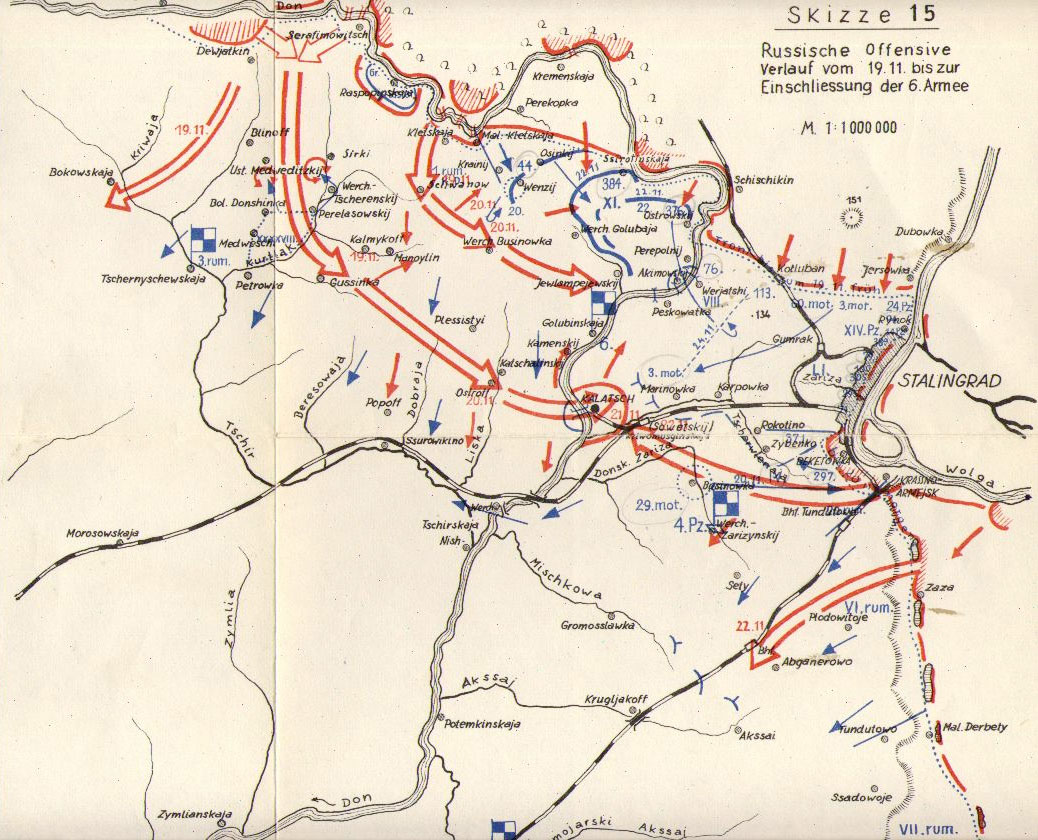 |
|
Although the Soviet casualties were not published up to this point, it can be said that the Soviet units were near the point of exhaustion. A determined attack against them could have succeeded.
The Soviet mechanised and cavalry formations of the 5th Tank and 21st Army were still advancing and the protruding frontline at the Golubaya sector was drawn back. The German 44., 384. and 376. Infanterie divisions were retreating together with the kampfgruppen of the 14., 16. and 24. Panzer divisions. The new front line was running from Nishniy Abatov to east of Bolsha Nabatovskiy.
For the Germans the bright spot was they were able to establish and consolidate their defensive lines. This was especially true of the northern line of the cauldron, which remained strong and solid.
Otherwise the first death knell had sounded.
The Taking of the Bridge at Kalach and Conclusion (live on 21 January 2010)...
|
Last Updated On Thursday, January 14, 2010 by Blake at Battlefront
|
|
|